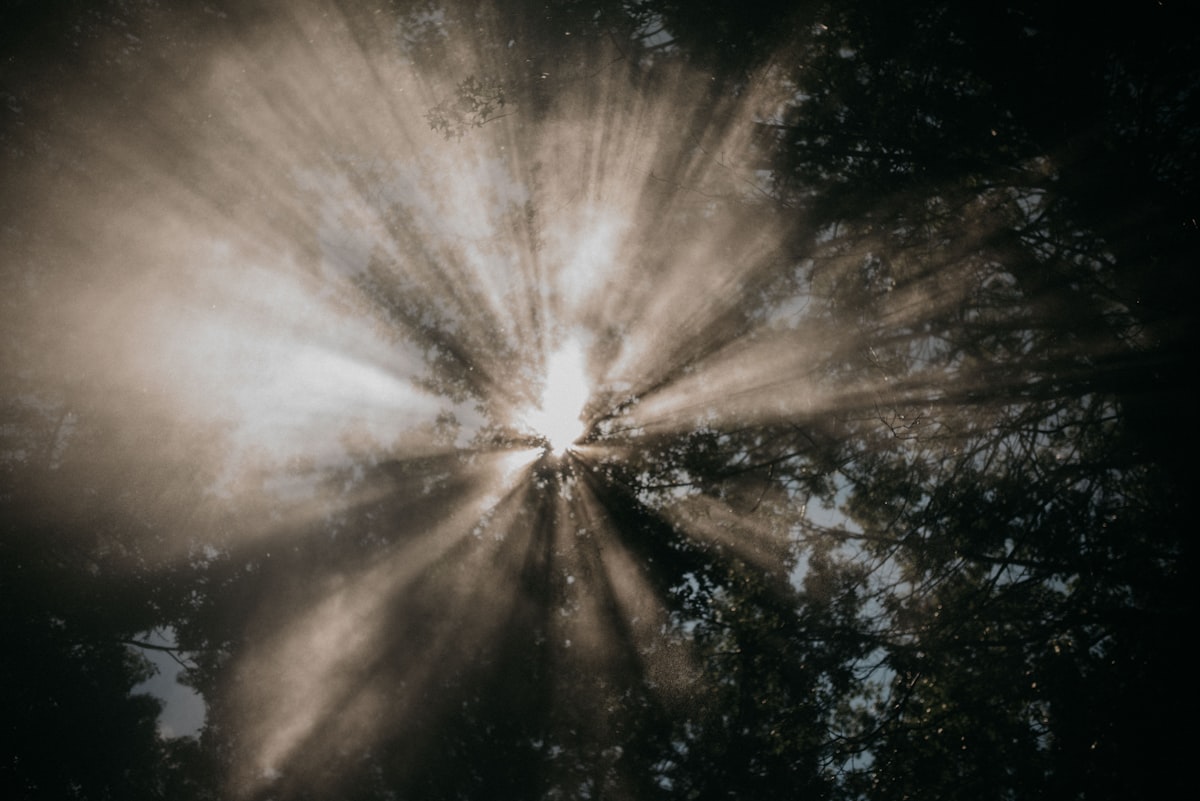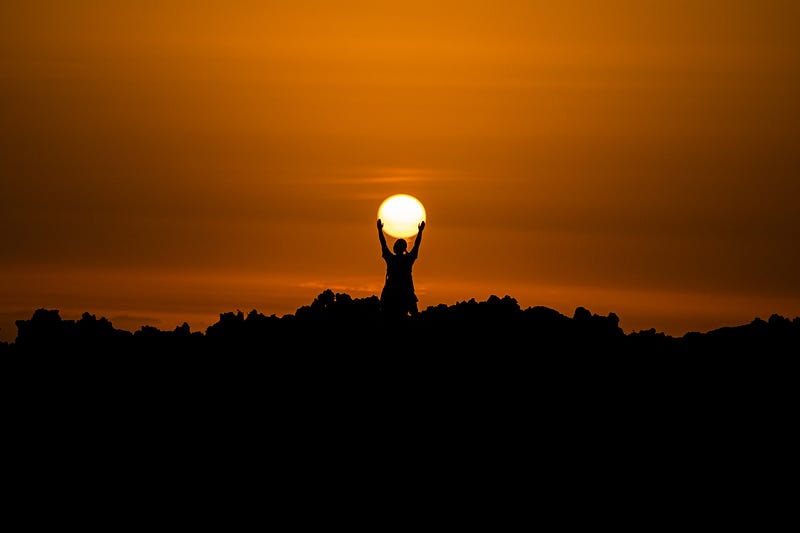Breathing in the Light
In the the pandemic era, we need to take a break from it all, to reorient ourselves in the midst of suffering and uncertainty.

My street looks strange these days.
We live on a cul-de-sac in the suburbs of Houston, an idyllic kind of place with lots of trees and nearly as many kids. Normally, on a weekend, we’d see children, from toddlers up through fifth graders, running around the neighborhood together. They ride bikes, have foot races, climb trees, organize impromptu games like “Capture the Flag.”
Yet, these days, the cul-de-sac is quiet. The kids occasionally come out, but rather than running around together, rolling in the grass, and tagging each other, they keep a wide berth.
Being a child in the coronavirus age looks strange. Distant.
The pandemic has created a certain distance between all of us. In the midst of this chasm between me and my neighbors, I find the reality of the virus pressing in on me. News coverage of the virus draws me in. It’s everywhere!
A month or two ago, I would spend thirty or forty minutes each day looking at news stories, mostly articles about the presidential primaries.
No more.
In fact, it’s hard to find much coverage of the 2020 presidential election. In years past, I would’ve looked at this as a blessing. Now, however, I’d love a distraction from the COVID-19 data. Numbers and exponential curves and anecdotal accounts about how someone survived the virus: these dominate my news feed.
In the the pandemic era, we need to take a break from it all, to reorient ourselves in the midst of suffering and uncertainty.
This morning, as I sat in my regular meditative practice, an image came to me that I found very helpful: breathing in the light.
Breathing in the Light
On a sunny spring morning, I can sit in my backyard, close my eyes, and feel the heat from the sun radiating through the leaves of the trees. That light has traveled 93 million miles to touch my skin and warm me.
The sun, amazingly, creates (almost) all opportunity for life on Earth. Without its rays, none of this would be possible. Its heat puts our atmosphere and oceans into motion, stirring up the organic compounds that build life. Plants take advantage of the sun to create their own food. They use our star to fuel their food factories, thus building the bottom layer of the food chain that sustains almost all life on the planet.
The sun, that raging nuclear fusion reactor that seems so far away, powers me too. It does not simply warm my skin, but it can also warm my heart.
In times of sadness and despair — or even if I’m just in a “funk” — getting outside and being in the sun aids in mitigating that inner darkness.
The sun is not merely an external thing, but something that we can breathe in to warm our bodies and our souls.
The Practice
As with other meditative practices that I have written about before, I suggest structuring your practice into three phases:
- The Preparation
- The Home
- The Action
Don’t worry too much about how long it takes you to go through this process. Ten minutes or more would be great, but even a few minutes will help you to find some relief.
The Preparation
To get into this practice, find a comfortable spot to sit. If it’s a sunny day, I’d suggest you find a spot in the sun: outside or by a window. But, you don’t need light for this because you’ll be harnessing the mental superpower of visualization to create your own light.
I sit cross-legged on the couch in my writing studio. It provides a tiny bit of back support that reminds me to keep myself upright, but it doesn’t allow me to get so comfortable that I am in danger of falling asleep.
Where you sit doesn’t really matter too much, so long as you aren’t distracted by how you’re sitting. If you’d like, you could even recline for this one. I can imagine, for example, that swaying in a hammock, birdsong in the background, might be a lovely way to do this practice.
Once you’ve found yourself in a comfortable position, close your eyes and begin with several deep, calming breaths. Focus on the sensation of these breaths. Where do you feel it the most? Your chest expands; your shoulders raise. Notice it.
Inhale. Feel your body’s alertness grow. Pay attention to the air rushing in through your nose. Focus on that rush of cool air into your nostrils.
Exhale. Allow your body to soften as the warm air exits.
Do this for a minute or two, for a total of eight or ten breaths.
The Home
Now it’s time to go Home. For me, Home is that place where the practice rests; it’s the image or the activity that is going to focus my mind for the rest of the session. When I get distracted, when my mind wanders, I simply ask it to return to Home.
Home for this practice is the sensation of breathing in the sun’s light.
Begin by imagining (or, if you happen to be outside and in the sun, experiencing) the warmth of the sun. Feel the rays on your body, heating you up, bringing you to temperature.
- Focus your full attention on that sensation.
- What does it feel like when the sun touches your skin?
Imagine that you are breathing that warmth, breathing that light into your body. Like a vapor or a smoke, draw the sun’s warmth into your chest.
With each inhale say to yourself: Breathe in the light.
When I do this, warmth radiates through my body, from my center — my heart and my lungs — outward. If I scan down the body, I feel the heat all the way out to the tips of my fingers and my toes.
If, at any time, you notice your mind wander away from the light, away from the warmth, then bring it back. No big deal. This is meditation! Do not judge your mind for wandering; that’s what it does. Simply bring it back and say to yourself: breathe in the light.
Continue to breathe in the light for five minutes, ten minutes, or more. It’s up to you!
The Action
When you have finished the practice, it’s time to take action. Today’s action is very simple: gratitude. Find someone or something that matters to you and express how grateful you are for that person or that thing.
It might feel silly, especially if you’ve chosen a thing as the recipient of your gratitude, but I encourage you to express your gratitude aloud. There’s something about saying things that reifies them, that makes them real.
- Take your gratefulness seriously.
- Deepen its impact.
- Express it to the universe.
Breathing in the light and expressing your gratitude will help you to find a bit of comfort in the midst of uncertainty or worry.
Breathe in the light and breathe out your darkness.
Stephen Hebert is a native of Houston, Texas, and a graduate of both the University of Texas at Austin and Harvard University where he studied Religion, Classical Civilization, and Literature. By day, he teaches courses in American Literature, Writing, Short Fiction, Poetry, Philosophy, Ethics, Early Christian History, Greek, and Mysticism. By night, however, he works at his notebooks and keyboards and typewriters, creating short fiction and novels as he sips whiskey and craft beer.


